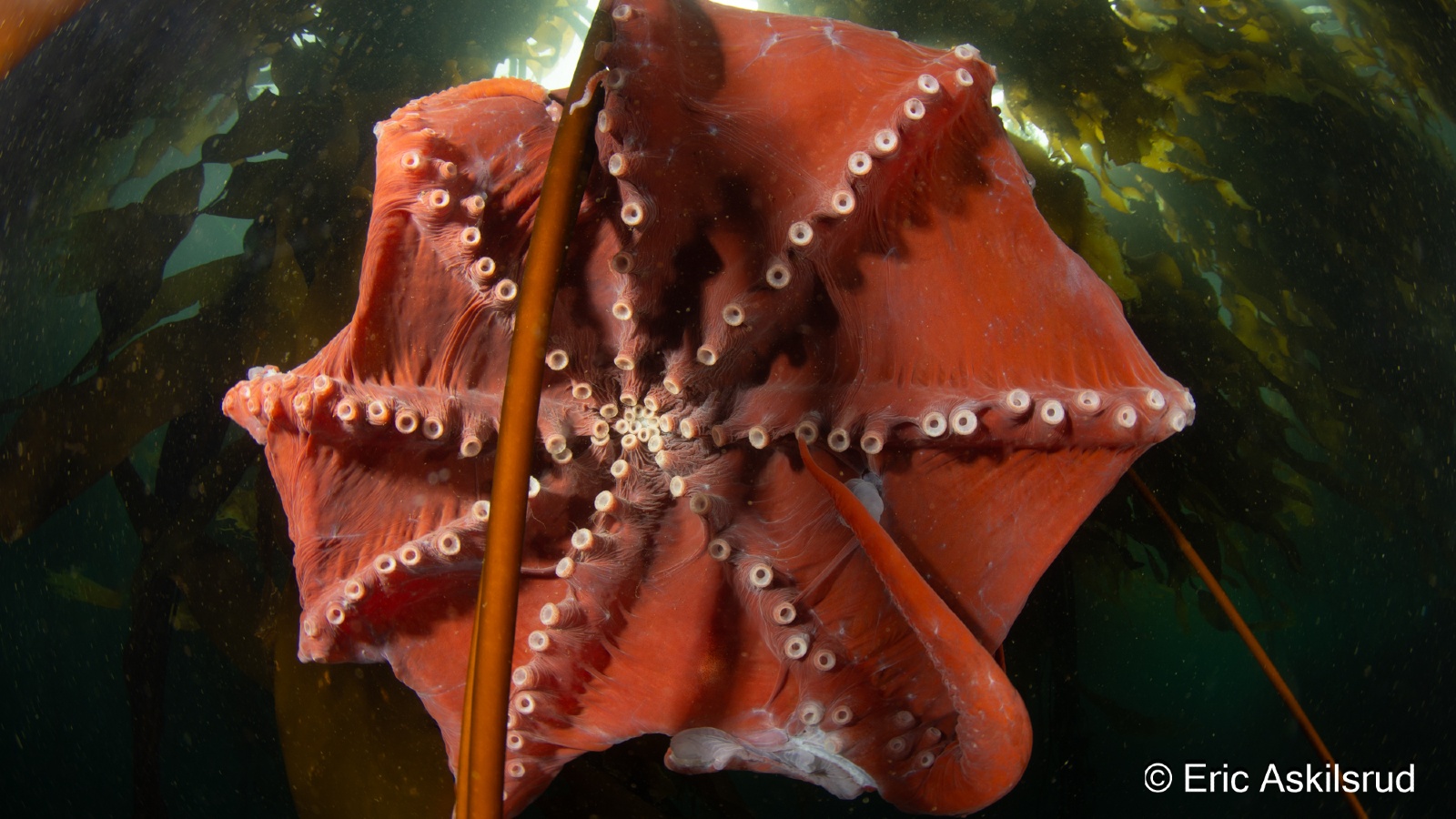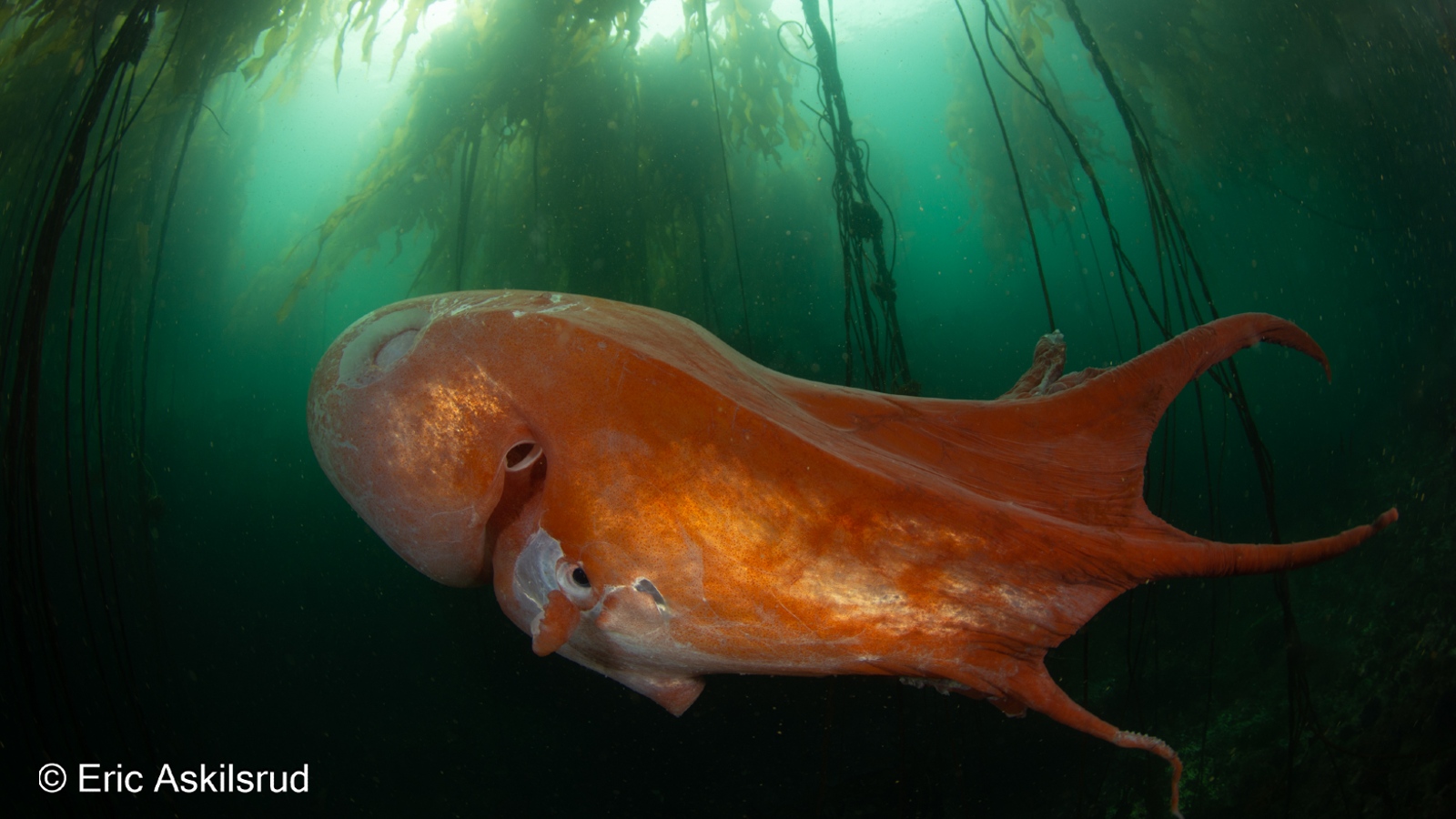See extremely rare photos of alien-looking '7-arm octopus' spotted near Washington coast
The seven-arm octopus, which actually has eight arms, is one of the largest octopus species and is rarely seen by people because it normally dwells in the deep sea.
A diver in Washington has captured stunning photos of a massive, alien-looking octopus in shallow water along the state's coastline. The rarely seen cephalopod, which spends most of its life in the deep sea, had injuries that suggest it may have been recently attacked by a cookiecutter shark.
Underwater photographer Eric Askilsrud, who is based in Washington, snapped the pictures on Sept. 8 while diving at Tongue Point in the Salish Sea, near the Canadian border. Askilsrud encountered the octopus in 10-foot-deep (3 meters) water while exploring a kelp canopy. The unusual-looking cephalopod was around 3 feet (0.9 m) long.
"It was floating motionless with its tentacles down," Askilsrud told Live Science. At first, Askilsrud thought it was a kelp tangle, but he soon realized he was looking at a "very bizarre-looking" octopus.
Askrilsrud had no idea what species the octopus belonged to, so he sent his photos to Gregory Jensen, a marine biologist at the University of Washington, who identified the creature as a seven-arm octopus (Haliphron atlanticus).
Related: 10 bizarre deep-sea creatures that washed ashore in 2022
Seven-arm octopuses, also known as blob octopuses or septopuses, are one of the largest octopus species on the planet — capable of reaching a maximum length of around 11 feet (3.4 m). Despite the name, these octopuses do actually have eight arms. But the males are known to hide their hectocotylus — a specialized arm used to fertilize eggs — in a sac beneath their right eye, which is how the name originally came about.
Severn-arm octopuses usually live in deep waters far from shore, according to the Monterey Bay Aquarium Research Institute (MBARI). As a result, most of what we know about the species comes from remotely operated vehicle (ROV) footage, or when specimens wash ashore, like one found in Puget Sound, Washington in 2020.
Get the world’s most fascinating discoveries delivered straight to your inbox.
Related: How do octopuses change color?
In 2017, an ROV operated by MBARI filmed a seven-arm octopus feeding on an egg-yolk jellyfish (Phacellophora camtschatica), suggesting that the species mainly feeds on slow-moving jellyfish, rather than hunting fish or crustaceans.
It is unclear which predators may target seven-arm octopuses. But strange round marks on the recently photographed individual may have been inflicted by a cookiecutter shark (Isistius brasiliensis), a small shark that is known to bite eerily circular chunks of flesh from a range of different marine animals.
Another seven-arm octopus was also recently seen in the shallows of the Salish Sea. On Sept. 17, Cam Polglase filmed an individual at Ogden Point near Victoria in British Columbia — just 23 miles (37 kilometers) from Tongue Point. It is currently unclear if this is just a coincidence, or if there is something causing these octopuses to head into shallower water.

Harry is a U.K.-based senior staff writer at Live Science. He studied marine biology at the University of Exeter before training to become a journalist. He covers a wide range of topics including space exploration, planetary science, space weather, climate change, animal behavior and paleontology. His recent work on the solar maximum won "best space submission" at the 2024 Aerospace Media Awards and was shortlisted in the "top scoop" category at the NCTJ Awards for Excellence in 2023. He also writes Live Science's weekly Earth from space series.





